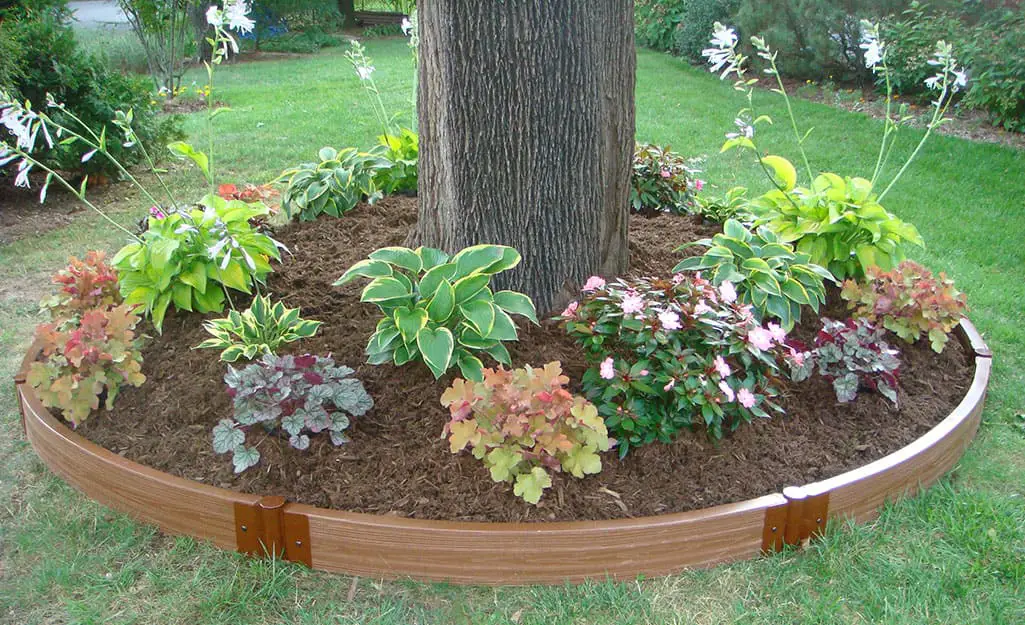Creating well-defined edges in your garden can greatly enhance its appearance and functionality. Garden edging materials not only provide a clear boundary between different areas but also help in keeping mulch, soil, and plants in place. Here’s a look at the top 5 garden edging materials, along with their pros and cons.
1. Brick Edging
Pros:
- Aesthetic Appeal: Bricks offer a classic, timeless look that can complement various garden styles.
- Durability: Bricks are highly durable and can withstand various weather conditions.
- Flexibility: They can be arranged in different patterns and shapes, allowing for creative designs.
- Low Maintenance: Once installed, brick edging requires minimal upkeep.
Cons:
- Cost: High-quality bricks can be expensive.
- Labor-Intensive Installation: Laying bricks properly can be time-consuming and may require professional help.
- Heavy: Bricks are heavy to transport and handle during installation.
2. Wood Edging
Pros:
- Natural Look: Wood blends well with garden landscapes, giving a rustic and organic feel.
- Ease of Installation: Wooden edges are relatively easy to install and can be done as a DIY project.
- Versatility: Available in various types, such as logs, planks, and timber, offering different aesthetic options.
- Cost-Effective: Generally less expensive compared to other edging materials.
Cons:
- Susceptibility to Rot: Wood can rot over time, especially in wet conditions, requiring replacement.
- Maintenance: Needs regular maintenance, including sealing and staining, to prolong its life.
- Pest Issues: Wood can attract termites and other pests.
3. Metal Edging
Pros:
- Sleek Appearance: Metal edging provides a clean, modern look that can fit both traditional and contemporary gardens.
- Durability: Highly resistant to weathering and damage, lasting for many years.
- Flexibility: Can be easily shaped to create curves and custom designs.
- Low Maintenance: Requires little to no maintenance once installed.
Cons:
- Cost: Metal edging can be pricey, especially if opting for high-quality materials like steel or aluminum.
- Installation: May require professional installation due to the need for cutting and securing.
- Heat: Metal can become very hot in direct sunlight, posing a potential burn risk.
4. Stone Edging
Pros:
- Natural Aesthetic: Stones provide a natural, earthy look that integrates well with garden landscapes.
- Durability: Extremely durable and can last for decades without needing replacement.
- Variety: Available in numerous shapes, sizes, and colors, allowing for unique and personalized designs.
- Low Maintenance: Requires minimal upkeep once installed.
Cons:
- Cost: Natural stone can be quite expensive, particularly if sourcing rare types.
- Heavy: Stones are heavy and can be difficult to transport and install.
- Installation: Placing stones securely may require professional assistance to ensure stability.
5. Plastic Edging
Pros:
- Affordability: One of the most cost-effective edging options.
- Ease of Installation: Simple to install, often as a DIY project.
- Flexibility: Available in various colors and styles, can be shaped to fit any garden layout.
- Lightweight: Easy to handle and transport.
Cons:
- Durability: Less durable compared to other materials and may become brittle over time.
- Appearance: Can look less natural and aesthetically pleasing, especially if not installed properly.
- Environmental Impact: Plastic is not eco-friendly and can contribute to environmental pollution if not disposed of correctly.
Conclusion
Choosing the right garden edging material depends on various factors, including your budget, the aesthetic you desire, and the amount of maintenance you’re willing to perform. Each material has its unique benefits and drawbacks, so consider these pros and cons carefully to select the best option for your garden.


